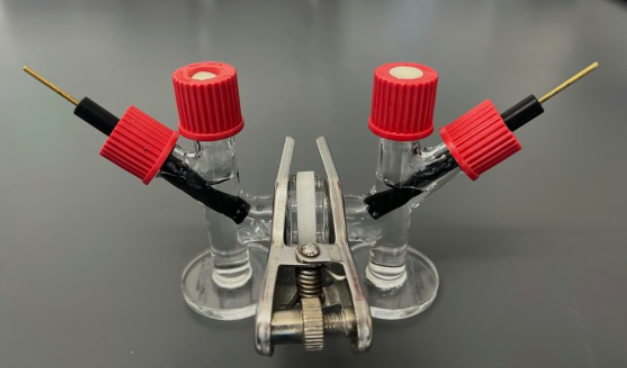New THC Tester Technology: An Overview
In a recent article published in Organic Letters, Professor Neil Garg, an organic chemist at UCLA, and researchers from the startup ElectraTect Inc. described a process by which THC, when introduced into a solution in their new laboratory device, can be oxidized to generate an electric current. The strength of this current indicates how much of the psychoactive compound is present in the solution.
According to the researchers, with the recent legalization of marijuana in many states, having a tool similar to a breathalyzer could help make roads safer. Studies have shown that marijuana use impairs certain driving skills and is associated with a significantly increased risk of accidents.
How the THC Tester Works
Back in 2020, Professor Garg and researcher Evan Darzi discovered that removing a hydrogen molecule from the larger THC molecule causes it to change color in a detectable way. This process, known as oxidation, is similar to the one used in alcohol breath analyzers, which convert ethanol into an organic chemical compound by removing hydrogen. In most modern breathalyzers, this oxidation generates an electric current that indicates the presence and concentration of ethanol in the breath.
Since their discovery in 2020, the researchers have been working with their patented oxidation technology to develop a THC breath analyzer that works in a similar way. ElectraTect has obtained an exclusive license for the patent rights from UCLA.
The researchers detailed how the new device works: when THC comes into contact with a negatively charged electrode (anode) on one side of the device’s H-shaped glass chamber, it is oxidized into a new compound called THCQ, sending electrons to the positively charged electrode (cathode) on the other side, generating a measurable electric current. The higher the concentration of THC molecules, the stronger the current.
Potential Impact and Future Applications
The researchers stated that this relatively simple and inexpensive technology could be scaled up for commercial production once it is refined. They are currently working on improving the device and making it more compact.
This new technology could help make law enforcement’s approach to marijuana more fair. Currently, urine or blood tests are used to detect THC in drivers. Not only are these tests difficult to perform roadside, but they also detect residual compounds in the body for weeks after cannabis use. This ambiguity can lead to fines, jail time, or job loss, even if someone only used cannabis once a week ago.
While a commercial breath analyzer based on this technology is still a few years away, the researchers emphasized that such a tool could ultimately have benefits beyond road safety and law enforcement. Their technological breakthrough could be used in any situation where fair cannabis testing is crucial—at workplaces where employees operate machinery, or even at home, so people can test themselves before getting behind the wheel.
Current Alternatives and Limitations
Existing versions of similar cannabis testers available today do not provide instant results. Their process involves collecting a breath sample in a cartridge, which is then placed in a base station that determines the test results over about 20 minutes.



